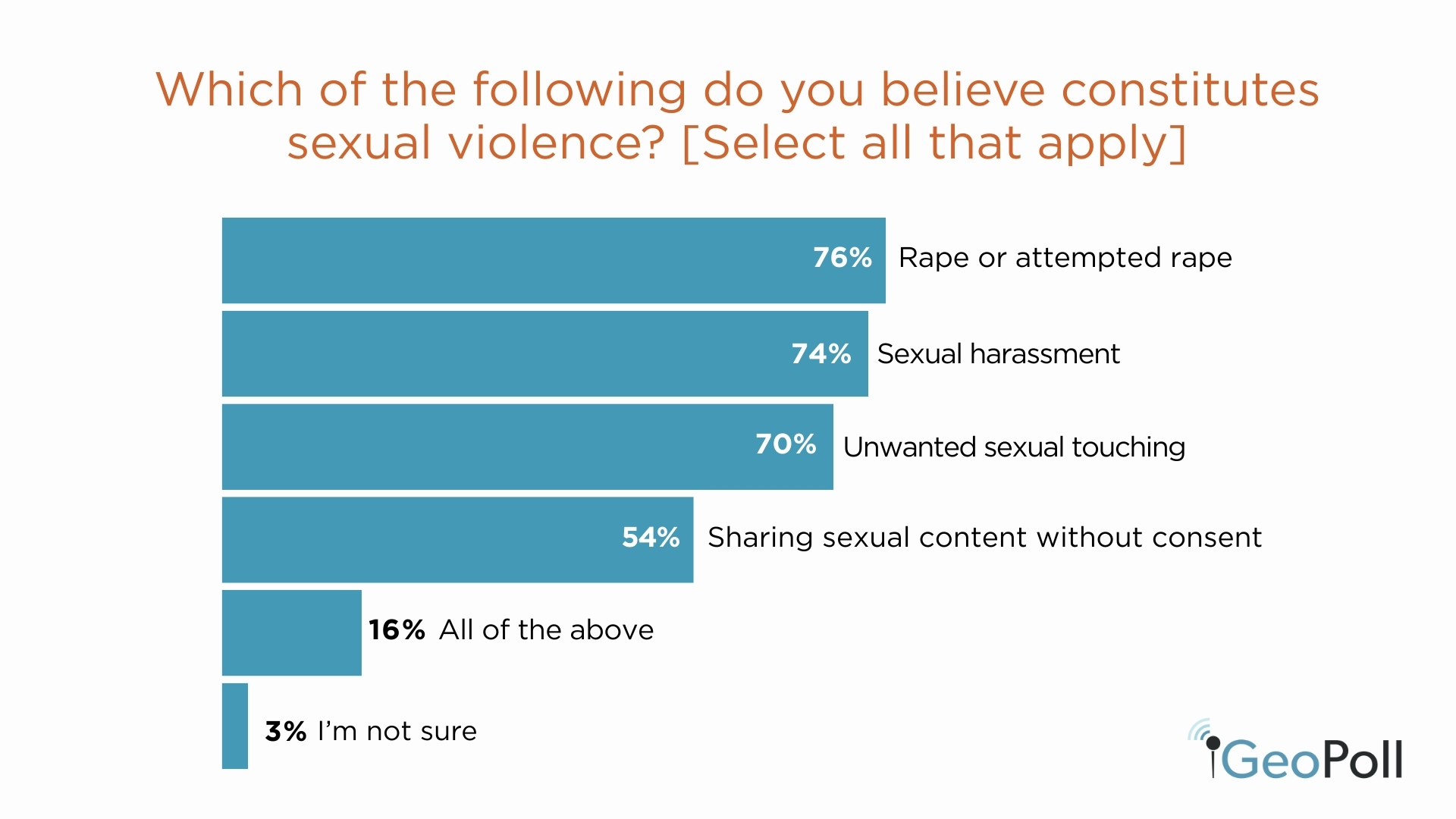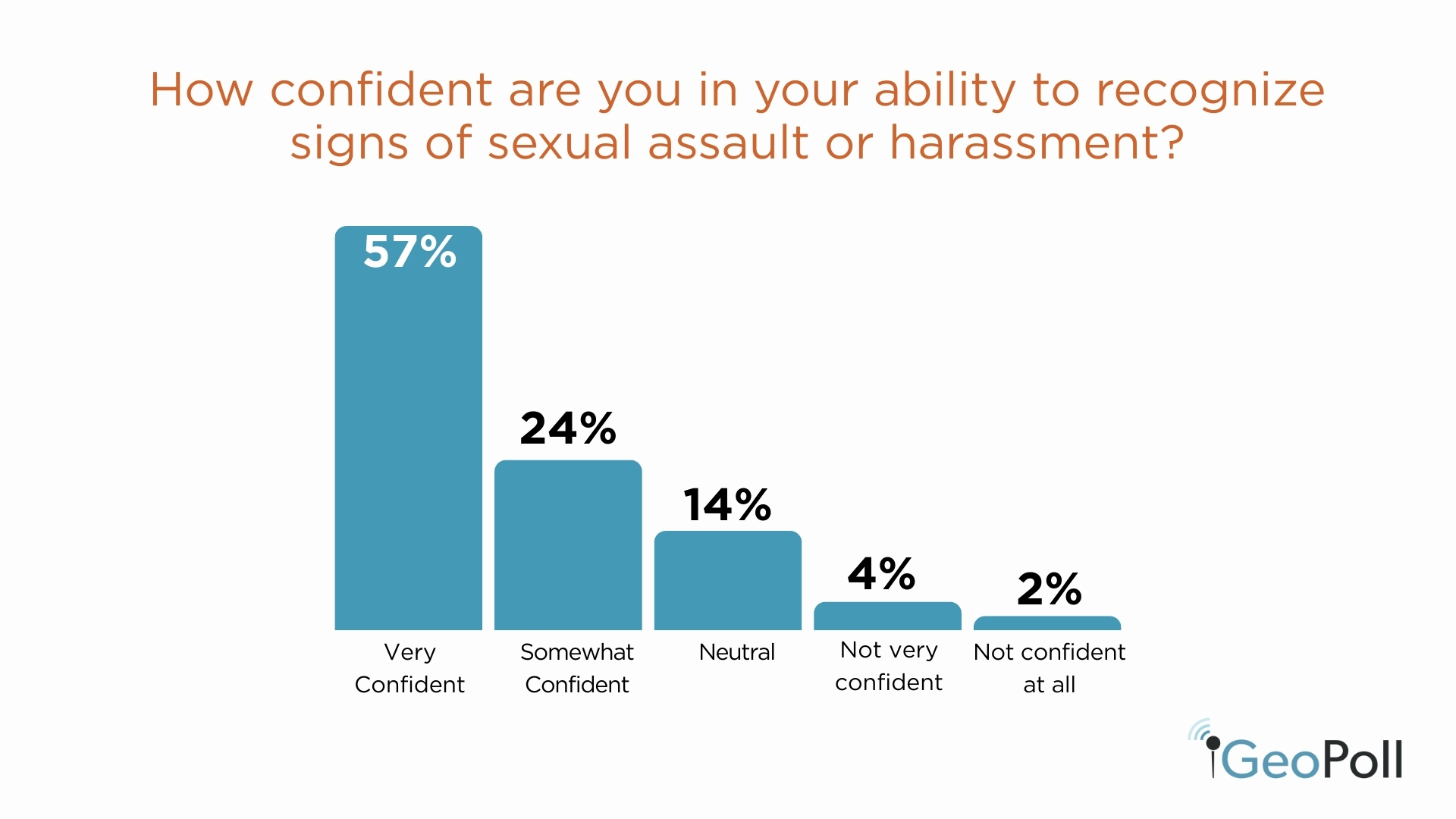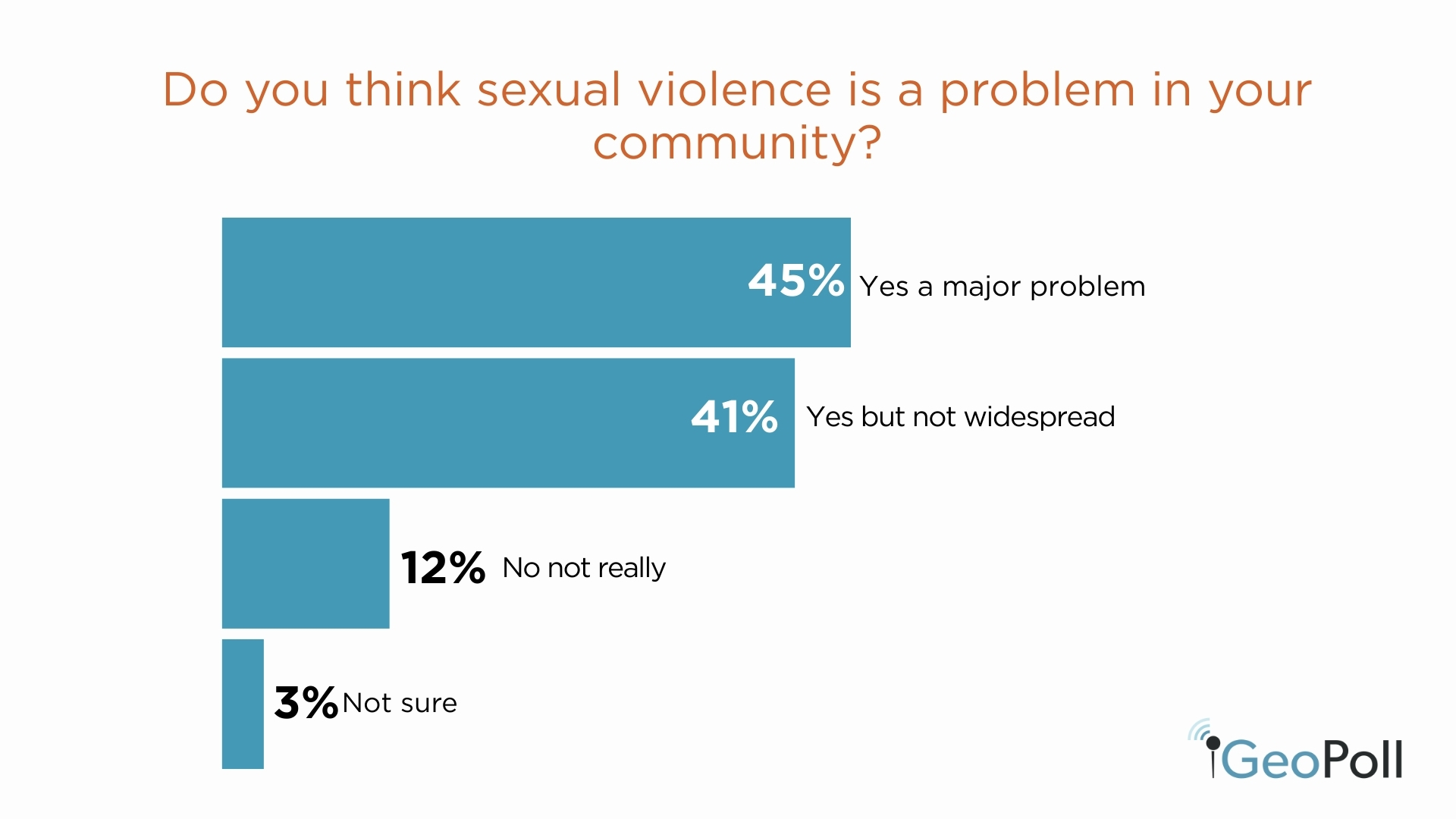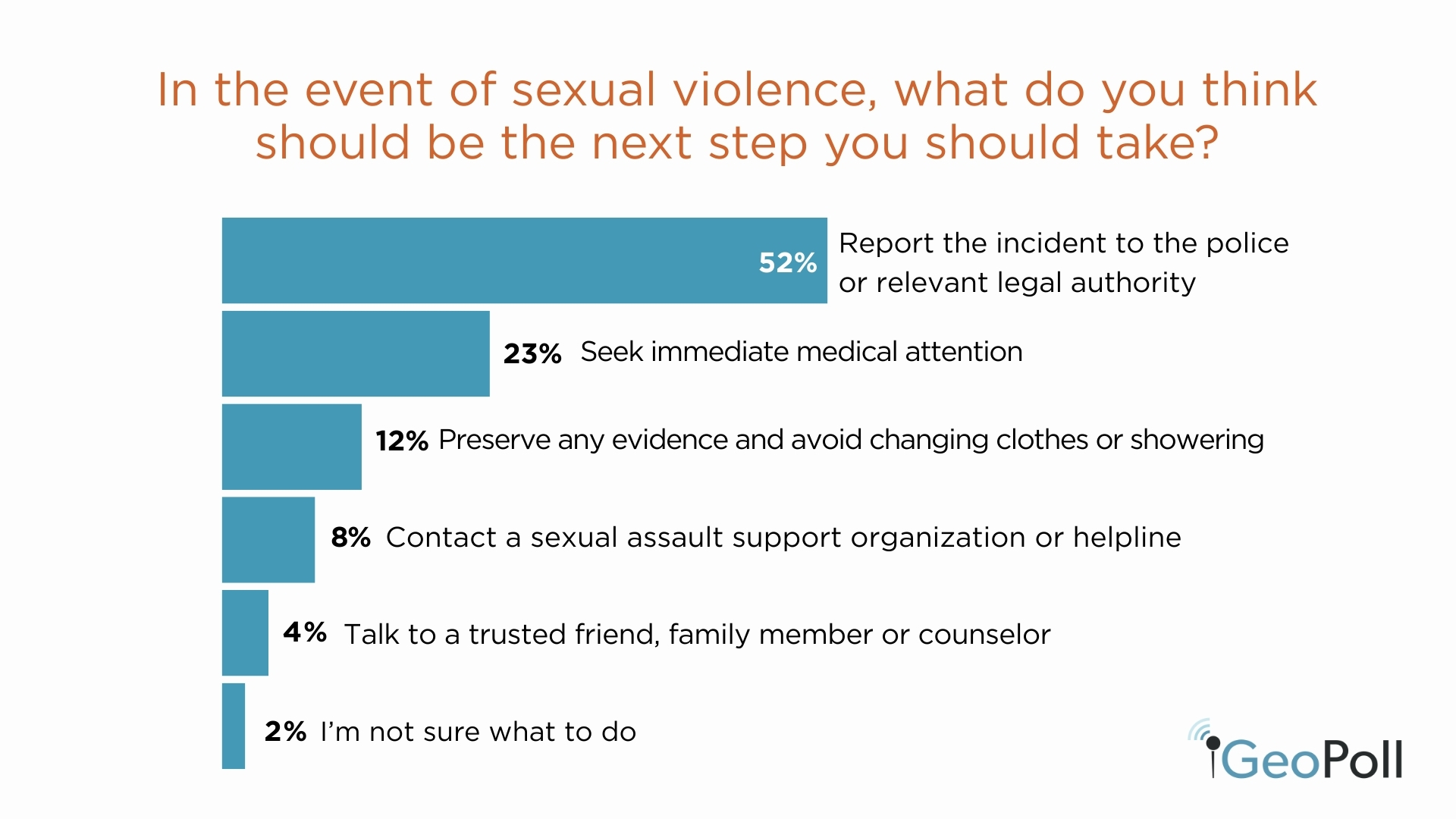April marks Sexual Violence Awareness Month, an important opportunity to highlight the ongoing challenge of sexual violence worldwide. This year’s theme, “Together We Act, United We Change,” has inspired GeoPoll to conduct a study aimed at gathering insights into the prevalence, causes, and perceptions surrounding sexual violence. The results provide a detailed overview of the issues at hand and pinpoint key areas where focused interventions and collaboration are necessary. Sexual violence remains a significant, deeply ingrained problem in Africa, impacting millions, especially women and girls.
According to the World Health Organization (WHO), around 37% of women in Sub-Saharan Africa have encountered physical and/or sexual violence at some point in their lives. These alarming statistics serve as a stark reminder that tackling sexual violence calls for urgent and coordinated efforts.
In April 2025, GeoPoll conducted a mobile-based survey with 2,195 respondents across four African nations—Ghana, Kenya, Tanzania, and Uganda. This extensive study aimed to capture perceptions, experiences, and attitudes related to sexual violence, particularly among the youth demographic. By sharing this data, the report intends to inform targeted interventions and inspire collective action towards creating safer and more supportive communities.
Key Findings
Prevalence: The research showed that over half of respondents, specifically 55%, have either experienced sexual violence themselves or are aware of someone who has. Notably, Uganda reports the highest incidence of such cases, with a staggering 76% of individuals affected.
Understanding of Sexual violence: Here are the three primary forms of sexual violence: rape and attempted rape, sexual harassment, and unwanted sexual touching.
Next Action: In the event of sexual violence, 52% of the respondent stated they would report the incidence to the police or relevant legal authorities.
Prevalence
The survey revealed that 92% of respondents are aware of sexual violence, with 55% indicating that they have either personally experienced it or know someone who has. Conversely, 37% of respondents reported that they have neither experienced nor know anyone who has been affected by sexual violence.
What Constitutes Sexual Violence
A significant 76% of participants identified rape or attempted rape as the primary form of sexual violence. Following closely, 74% of respondents pointed to sexual harassment as a serious violation of personal boundaries. Additionally, 70% recognized unwanted sexual touching as a form of assault that infringes on individual autonomy. Furthermore, 54% of those surveyed highlighted the act of sharing sexual content without explicit consent as another unacceptable behavior that constitutes sexual violence.

Signs of Sexual Violence
Recognizing the signs of sexual abuse is crucial for providing children with the support they need. It can empower them to voice their experiences and help secure assistance at an earlier stage. Children may not always be aware that what is happening to them is inappropriate, or they might feel afraid to communicate their situation. Understanding these signs is an important step in protecting and helping those in need.
The survey revealed that 57% of respondents expressed a high level of confidence in their ability to recognize sexual violence. Additionally, 24% reported being somewhat confident, while 14% remained neutral on the matter. In contrast, 4% indicated they are not very confident, and 2% stated they are not confident at all in recognizing sexual violence.

Community and sexual violence
The survey findings revealed significant perceptions of sexual violence within the community. Specifically, 45% of respondents identified sexual violence as a major problem, while 41% acknowledged it as an issue, although not widespread. In contrast, 12% of participants felt that sexual violence is not a concern in their community. This data highlights varying levels of awareness and concern regarding the issue of sexual violence in the area.

Physical Centers
When asked whether they are aware of the presence of physical centers they can go to in the event of sexual violence, 71% of respondents are aware of the physical centers they can access in the event of sexual violence, while 29% are unaware of such resources.
Next Step to take
In the aftermath of sexual violence, the appropriate next steps can be critical. According to recent insights, a significant 52% of individuals believe that the most important action is to report the incident to the police or the relevant legal authorities. This step can be pivotal in seeking justice and ensuring safety.
Following closely, 23% advocate for seeking immediate medical attention, recognizing that prompt care is vital for both physical and emotional well-being. Additionally, 12% emphasize the importance of preserving evidence; they recommend refraining from changing clothes or showering, understanding that every piece of evidence can be crucial in a legal context.
Meanwhile, 8% suggest reaching out to a sexual assault support organization or helpline, providing a pathway to professional assistance and emotional support. Some individuals, 4%, find solace in confiding to a trusted friend or family member, seeking comfort and understanding during such a traumatic time.
Lastly, a small percentage, 2%, express uncertainty about what steps to take next, highlighting the need for more awareness and resources to guide those affected in their decision-making.

Sexual Violence Education and Training
The study reveals that 54% of respondents have received education or training while attending school or university. Additionally, 24% reported acquiring skills through work or community programs, while 23% have never experienced any form of education or training.
Communication and sexual assault
When asked whether they agreed with the statement, “Sexual assault is a result of miscommunication, not intentional harm,” the majority of respondents expressed clear disagreement. 31% disagreed with the statement, and 24% strongly disagreed, indicating that over half of the respondents viewed sexual assault as an intentional act rather than a misunderstanding. Meanwhile, 19% agreed and 13% strongly agreed, suggesting that a smaller segment believed miscommunication could be a factor. 15% of respondents remained neutral, neither agreeing nor disagreeing.
Community and prevention
In response to the statement, “It is the responsibility of everyone to help prevent sexual violence,” an overwhelming majority of respondents expressed strong support. 70% strongly agreed with the statement, demonstrating a widespread recognition of collective responsibility in addressing sexual violence. An additional 26% agreed, reinforcing the idea that prevention requires the involvement of all members of society. Only 3% remained neutral, while 2% disagreed and a mere 1% strongly disagreed.
These findings highlight a strong consensus among participants that preventing sexual violence is a collective responsibility. This reinforces a solid foundation for community-led efforts and awareness initiatives.
Conclusion
By harnessing the power of data and mobile-based research, GeoPoll remains committed to illuminating these issues and empowering solutions that ensure safety, dignity, and equality for all.
Methodology/About this Survey
This Exclusive Survey was run via the GeoPoll mobile application between the 21st and 27th April 2025 in Ghana, Kenya, Tanzania, and Uganda. The sample size was 2,195, composed of random GeoPoll app users between 18 and 35. Since the survey was randomly distributed, the results are slightly skewed towards younger respondents.
GeoPoll is committed to supporting NGOs, health organizations, advocacy groups, and governments in addressing the critical challenge of sexual violence. Together, we can use data to inform targeted interventions, drive prevention efforts, and build stronger, more responsive support systems for survivors. Our mobile-based surveys offer a unique and proven method to gather insights on the prevalence of sexual violence, public attitudes, survivor experiences, and community awareness, especially in under-resourced and vulnerable regions. Through timely and reliable data, we aim to empower stakeholders to create more effective strategies and foster safer communities for all.
Please get in touch with us to get more details about our capabilities, explore more on various topics in Africa, Asia, and Latin America.
